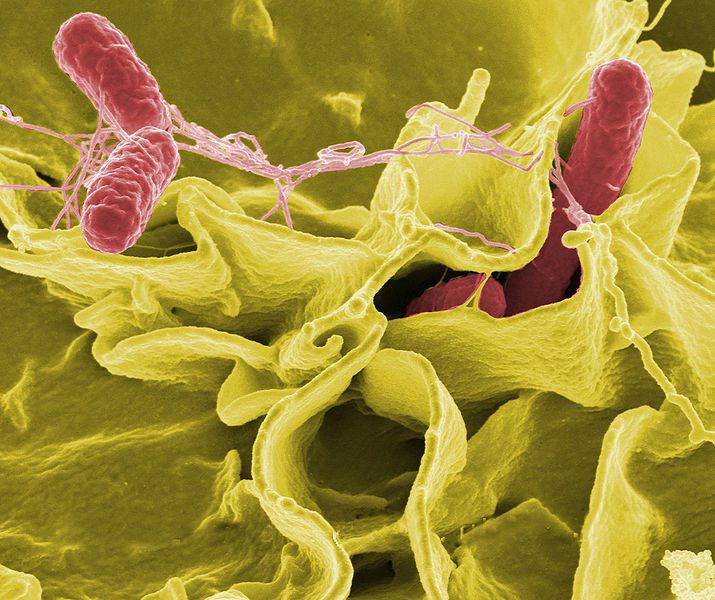-
 Dielectric
Dielectric
-
 Syrian brown bear
Syrian brown bear
-
 Recombinant DNA
Recombinant DNA
-
 Exhaust velocity
Exhaust velocity
-
 Fibula
Fibula
-
 Acetylation
Acetylation
-
 Primitive ocean
Primitive ocean
-
 Prime-boost
Prime-boost
-
 SARS-CoV
SARS-CoV
-
 Coccus
Coccus
-
 Doppler effect
Doppler effect
-
 Fine particle
Fine particle
-
 Maltitol
Maltitol
-
 Glycosidic bond
Glycosidic bond
-
 Small Magellanic cloud
Small Magellanic cloud
-
 Locus
Locus
-
 Breast-feeding
Breast-feeding
-
 Angina pectoris
Angina pectoris
-
 Firewire
Firewire
-
 Lymphokine
Lymphokine
-
 LH
LH
-
 Tropical year
Tropical year
-
 Perigee
Perigee
-
 Pyrometasomatic
Pyrometasomatic
-
 Spinplasmonics
Spinplasmonics
-
 Bit
Bit
-
 Cave pearls
Cave pearls
-
 Biogenic amine
Biogenic amine
-
 SQLite
SQLite
-
 Brown dwarf
Brown dwarf
Salmonella
The Salmonellae belong to the Enterobacteriaciae genus Salmonella. They cause two types of illnesses: gastroenteritis from food poisoning (salmonellosis), and typhoid and paratyphoid fevers.
Features of salmonellae
They are Gram negative bacilli which are mobile in all directions because of their flagelli. They are facultative aerobic-anaerobic.
They have a genome composed of a chromosome with almost 5 million base pairs coding for approximately 4,500 proteins.
Salmonella, salmonellosis and typhoid/paratyphoid fever
It is now known that there are more than 2,000 species of Salmonellae, although only a minority is responsible for the majority of human salmonelloses. The serotypes Typhimurium and Enteritidis are involved in gastroenteritis whereas the serotypes Typhi and Paratyphi are involved in the febrile diseases.
The first group are limited to the gastrointestinal system whereas the second can cross the intestinal barrier, colonising lymphoid tissue. Their pathogenicity is due to endotoxins produced by the salmonellae.
 Salmonella is a pathogenic bacterium responsible for salmonellosis and typhoid fever. © DR
Salmonella is a pathogenic bacterium responsible for salmonellosis and typhoid fever. © DR
Latest
Fill out my online form.



